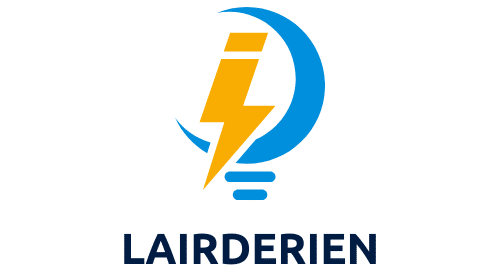The world is rapidly changing, and so is the way we produce and consume energy. With the steady increase in electricity demand and the need to reduce greenhouse gas emissions, microgrids are emerging as a viable solution for efficient energy management. Microgrids are small, localized energy systems with control capabilities, capable of operating independently or in conjunction with the traditional grid. These systems incorporate renewable energy sources, storage facilities, and load management tools to provide reliable, high-quality power. This article will discuss the role of microgrids in enhancing the UK’s energy security, covering their technological development, communication systems, data management and overall contribution to renewable energy generation.
The Technological Development of Microgrids
Microgrids are not a new concept. They have been in use for several decades, particularly in remote areas and on islands where energy access is limited. However, recent advancements in renewable energy technologies, storage systems and control mechanisms have greatly increased their potential.
A voir aussi : How to Optimize Your Home Office for Productivity Using Ergonomic Design?
Microgrids are composed of a range of energy sources, including solar panels, wind turbines, biomass plants, and energy storage systems such as batteries. These generate electricity close to where it’s consumed, reducing transmission losses and increasing efficiency. Microgrids also use advanced control systems to balance supply and demand, manage grid disturbances, and ensure a steady supply of power.
Another key development is the increasing digitisation of microgrids. Digital technologies enable real-time data collection and analysis, improving grid management and decision-making. For instance, smart meters can provide detailed information about energy consumption patterns, helping to optimize grid operation and reduce energy waste.
Avez-vous vu cela : How Can Augmented Reality Apps Help Students Learn Complex Science Topics in UK Schools?
Communication Systems in Microgrids
The operation of a microgrid relies heavily on effective communication systems. These systems coordinate the various components of the microgrid, ensuring smooth operation and efficient energy management.
Communication systems allow for real-time monitoring and control of the microgrid’s components. They collect data from different sources, analyse it, and make decisions based on this information. For example, a communication system might detect a sudden increase in electricity demand and respond by activating additional generation or storage resources.
Moreover, communication systems also provide a link between the microgrid and the main grid. This is crucial for situations where the microgrid needs to import or export power to the main grid. For example, if a large-scale blackout occurs in the main grid, the microgrid can disconnect and operate autonomously, ensuring continuous power supply.
Data Management in Microgrids
Data management plays a critical role in the operation of microgrids. With the increasing use of digital technologies, microgrids generate vast amounts of data, from generation and consumption figures to operational status and environmental conditions. This data is vital for efficient energy management and for maintaining grid stability.
In a microgrid, data management involves collecting, storing, processing, and analysing data. This data can be used to optimize grid operation, reduce energy waste, and maximize the use of renewable energy sources. For instance, by analysing data on solar radiation and wind speed, a microgrid can predict the output of its solar panels and wind turbines and adjust its operations accordingly.
Furthermore, effective data management can help in the detection and resolution of grid disturbances. For instance, if the data indicates a problem with a piece of equipment, the issue can be addressed before it escalates and affects the whole system.
The Contribution of Microgrids to Renewable Energy Generation
Microgrids are increasingly seen as a key enabler of renewable energy generation. They can incorporate multiple renewable energy sources, providing a flexible, resilient and sustainable solution for electricity supply.
In the UK, microgrids could play a significant role in the transition towards a low-carbon economy. They can help to integrate large amounts of renewable energy into the grid, reducing reliance on fossil fuels and decreasing greenhouse gas emissions.
Microgrids also provide a solution for the intermittency issue associated with renewable energy sources. By combining different sources and using storage systems, they can ensure a steady supply of electricity, even when the sun isn’t shining or the wind isn’t blowing.
Moreover, by generating power close to the point of consumption, microgrids can reduce transmission losses and improve energy efficiency. They can also empower communities to produce their own energy and contribute to a more decentralized, democratic energy system.
In conclusion, microgrids have a significant role to play in enhancing the UK’s energy security. With their advanced technologies, efficient communication systems, effective data management, and contribution to renewable energy generation, microgrids can provide a more secure, sustainable and resilient energy future.
Importance of Microgrids in Reducing Energy Costs
The application of microgrid systems in the UK can help in greatly reducing energy costs, thereby contributing to energy security. Microgrids can generate, distribute, and regulate the flow of electricity to consumers, reducing reliance on long-distance transmission lines and centralised power plants. This decentralisation not only promises to reduce energy costs but also helps in minimising the potential for transmission losses, power outages, and grid instability.
By integrating distributed energy resources like solar and wind, microgrids can harness renewable energy locally, thereby reducing reliance on expensive, often imported, fossil fuels. The inclusion of energy storage within the microgrid also provides the flexibility to store excess power generated during peak production periods, which can be utilised when there is a dip in power generation. This stored power can offset energy costs as it allows localised grid to meet its demand without having to purchase additional power from the main grid.
The integration of advanced control systems in microgrids allows for real-time monitoring and optimisation of power generation and usage, leading to further savings. Digitised energy management systems can predict usage patterns, which means microgrids can predict and adjust to changes in energy demand, further reducing energy costs.
Microgrids: A Step Towards Energy Security
Microgrids offer a promising solution to enhance the UK’s energy security through their ability to operate independently of the main grid. In an era where traditional utility grid can be vulnerable to natural disasters, cyber attacks or system failures, the robustness of microgrids offers a resilient alternative.
The self-sufficiency of microgrids is also a boon for remote areas where access to the main grid may be challenging. By sourcing power from local renewable energy sources, these microgrid systems can provide consistent power supply to such locations, thus increasing their energy security.
Moreover, the energy storage capabilities of microgrids can ensure a steady power supply even during periods of low energy generation. This can prevent blackouts and ensure uninterrupted power supply, thereby adding another layer of energy security.
Overall, the role of microgrids extends beyond just contributing to renewable energy generation. They are also instrumental in reducing energy costs, improving energy efficiency and substantially enhancing energy security. As the UK moves towards a low-carbon economy, the role of microgrids in facilitating this transition cannot be understated.
Conclusion
In a nutshell, microgrids are a transformative technology that could greatly enhance the UK’s energy security. They encourage the use of renewable energy, improve energy efficiency, reduce energy costs, and offer a resilient power supply. The UK’s push towards achieving a low-carbon economy necessitates the adoption of such advanced energy management systems. As more developments and improvements continue to be made in microgrid technology, their role in not just the UK’s, but the world’s energy landscape, will undoubtedly become increasingly significant.






